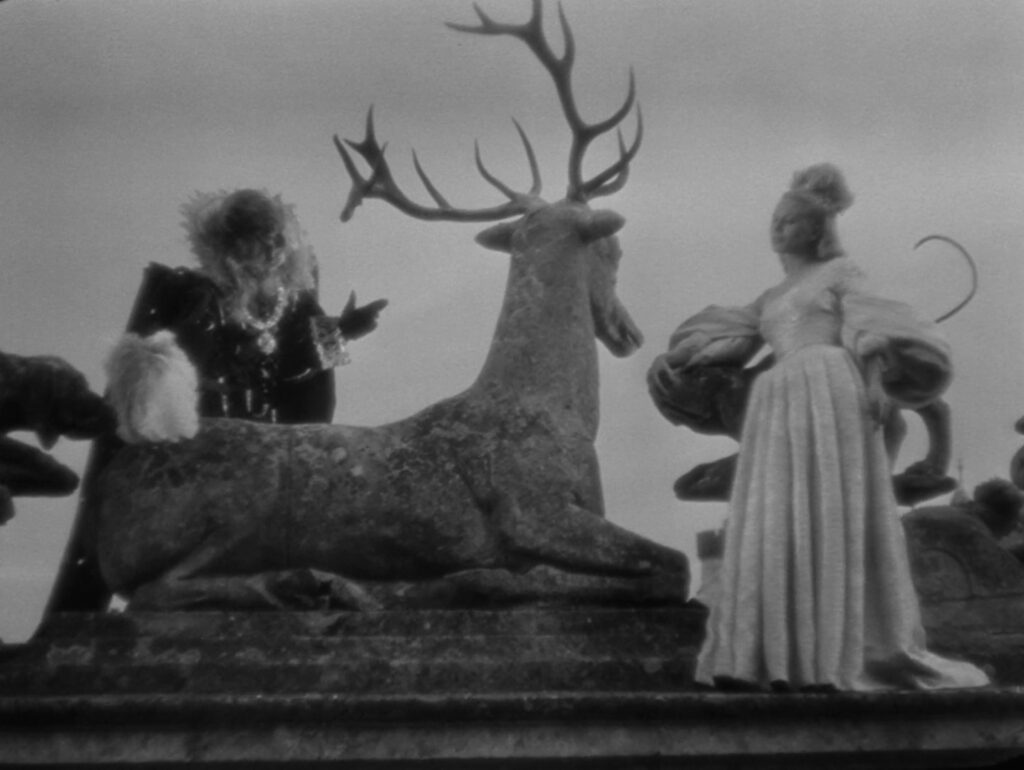
Beauty and the Beast
1946, directed by Jean Cocteau
An hour into Beauty and the Beast, the Beast entrusts Belle with his golden key and reveals the five secrets to his magical power: his rose, mirror, key, horse, and glove. These five objects fit nicely into a fairy tale because any child can recognize in them a potential beyond everyday materiality. A rose has power to stir emotion; a mirror can reveal the unseen; a key opens new worlds; a horse can carry people to far-off lands; and a glove can do wonders when it’s animated by a hand inside. An adult might see them more analytically as extensions of five major parts of the body linked to the will – the heart, senses, phallus, legs, and arms. In this sense the Beast’s powers are simply transformations of ordinary human powers.
Like the fantastic elements in any respectable movie or fairy tale, these magical objects are believable because they correspond to everyday experience. Not only are they abstract transformations of bodily faculties, they also have antecedents in the mundane world Belle comes from. In the opening scene her parquet floor reflects her face like a mirror; a large key hangs prominently in the master bedroom; and Belle’s father brings a horse and gloves on his journey to the seaport. Only the rose is missing from Belle’s world, except that she herself replaces the rose as the object closest to the Beast’s heart.
Two related patterns emerge from these observations. First, there’s a pronounced duality between Belle’s home in the countryside and the Beast’s castle in the forest. Second, the whole movie is governed by transformations.
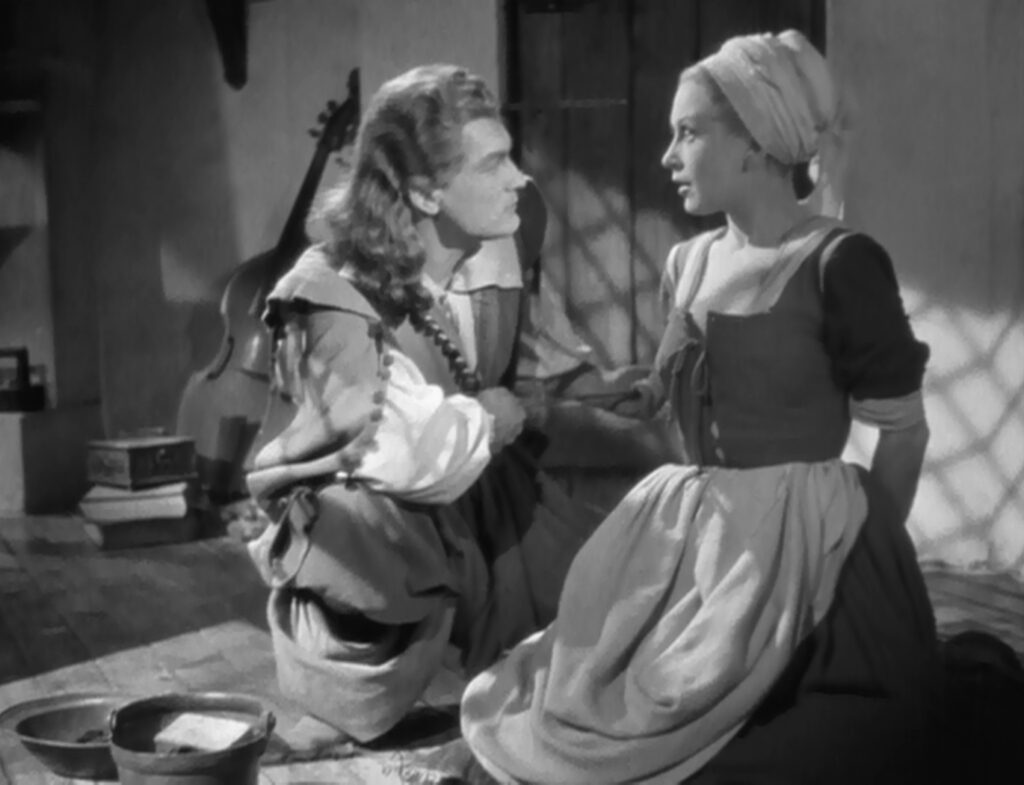
Shifts in visual style and genre underscore the differences between Belle’s manor house and the Beast’s hunting palace (which the Germans would call a Jagdschloß). The scenes at home are like commedia dell’arte with quick dialogue and action, whereas the Beast inhabits a gothic romance with fog, smoke, mystery, and a languid pace of life. Such formal differences, however, create symmetry – and symmetry draws attention to similarities. The Beast’s castle parallels Belle’s house in so many ways that it’s as if Belle had romanticized her home in a dream. Each has a grand staircase, a large fireplace, and a garden. A simple candlestick at home becomes the candelabras of the castle, and the yard full of sheets hung to dry becomes the palatial corridor with curtains blowing in the wind. The family’s small dog is multiplied and turned into stone hounds lining the castle terrace. The arrows that Ludovic and Avenant use for target practice are echoed in Diana’s arrow. The busy household full of guests and servants becomes the lonely castle filled with living statues.
Most of the transformations in Beauty and the Beast are reversals of status, from low to high or vice versa, and not all of them follow the duality of the film’s two worlds. The opening credits establish a pattern of transformations as the actors take turns erasing their names on Cocteau’s chalkboard. The fortunes of Belle’s family turn from prosperity to hardship as her father loses his ships and her brother covers his gambling debts. Belle’s fortunes change in the opposite direction, turning her, like Cinderella, from an abused sister to a magnificently dressed maiden in a lustrous dress and a jeweled crown. Her chain of pearls turns into a stinking root when her sister holds it, then back again to pearls on her bosom, and her teardrops change into diamonds. At the climax Avenant turns into a beast at the same moment that the Beast turns into a handsome prince in Avenant’s image.
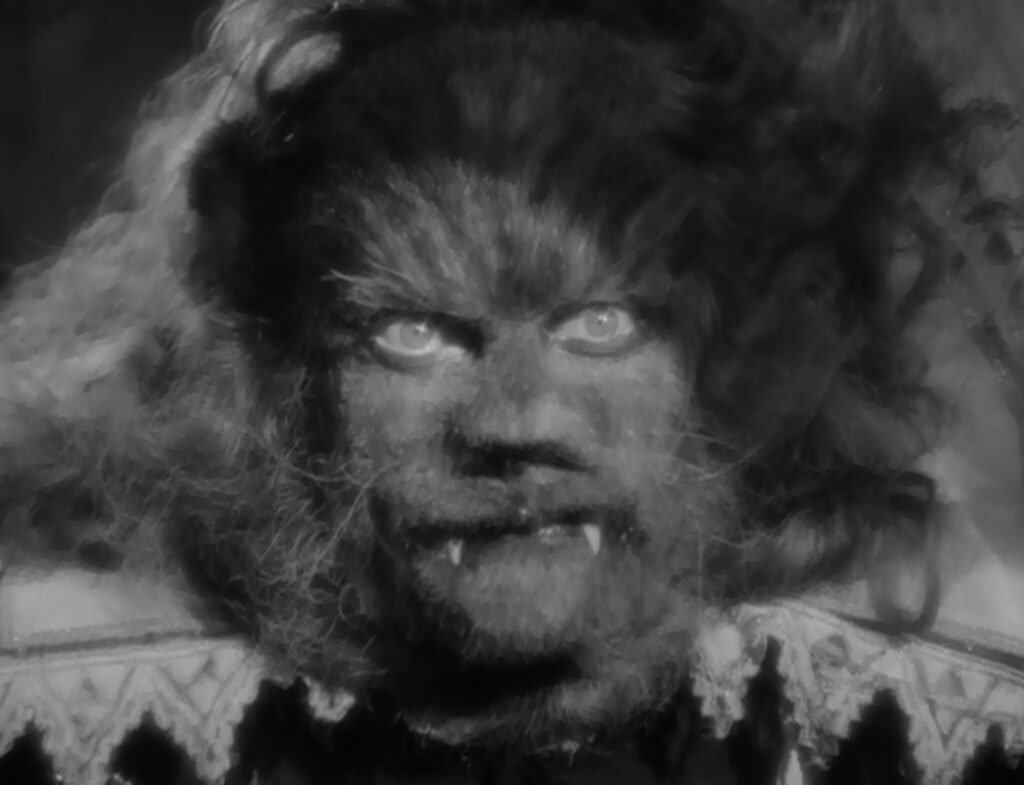
With so many transformations between the prosaic and the poetic, it’s only a short leap to guess that the movie itself means to transform the social and political reality it was born into. Filming began in August 1945 shortly after World War II ended, as France itself stood at the threshold of historic transformation. Belle’s country house is like a microcosm of wartime France, ruined economically and torn by infighting. The two nasty sisters, who dress up for the duchess’ ball but get turned away, are like the royalist-leaning French who were naive enough to think they could hold their status under Nazi rule. Belle represents the good of France, guided by honor and loyalty, full of trepidation but brave enough to face the unknown future.
Beauty and the Beast is based on a fairy tale written in 1756 by Jeanne-Marie Leprince de Beaumont, a French governess working in England who thought the story would prepare her charges, and other young women, for the prospect of an arranged marriage. Although the girls might initially be repulsed by the older men they were expected to marry, the fairy tale assured them that they would eventually come to love their husbands. The story was thus born with the insidious purpose of perpetuating an oppressive system, its aim made no less insidious by the psychological insight in its lesson, that ugliness fades with familiarity. This insight however has made the story timeless, and there is no reason it cannot be put to more benevolent use.
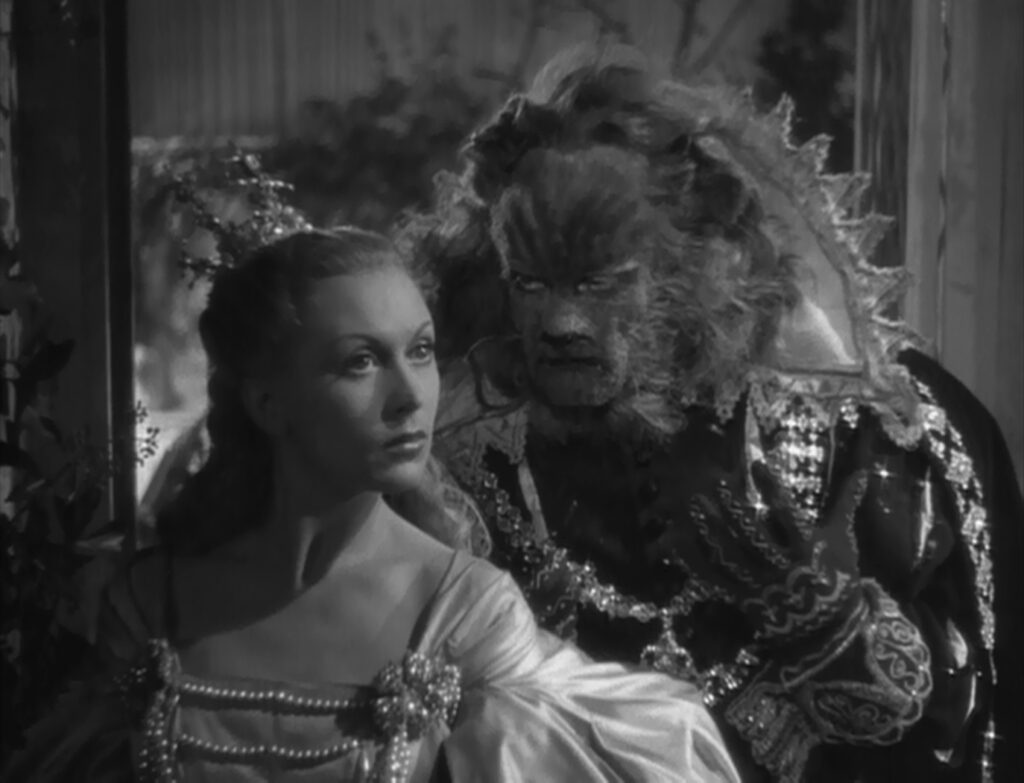
The fairy tale’s lesson would surely have been therapeutic for a French audience recovering from the long German occupation. The nation’s future looked frightening like the Beast, but the movie reassured viewers that there was no cause for fear. Likewise, Belle’s reconciliation to the Beast teaches us to soften our hatreds, thus helping to heal a divided nation. However badly your neighbors or family may have behaved during the stress of the occupation, their ugliness would vanish with time. The entire landscape of the Beast’s chateau, which is really a transformation of Belle’s home, looks spooky at first but develops into a beautiful and poetic world. By the end when Belle and her prince fly off through the clouds, an optimistic spirit emerges.
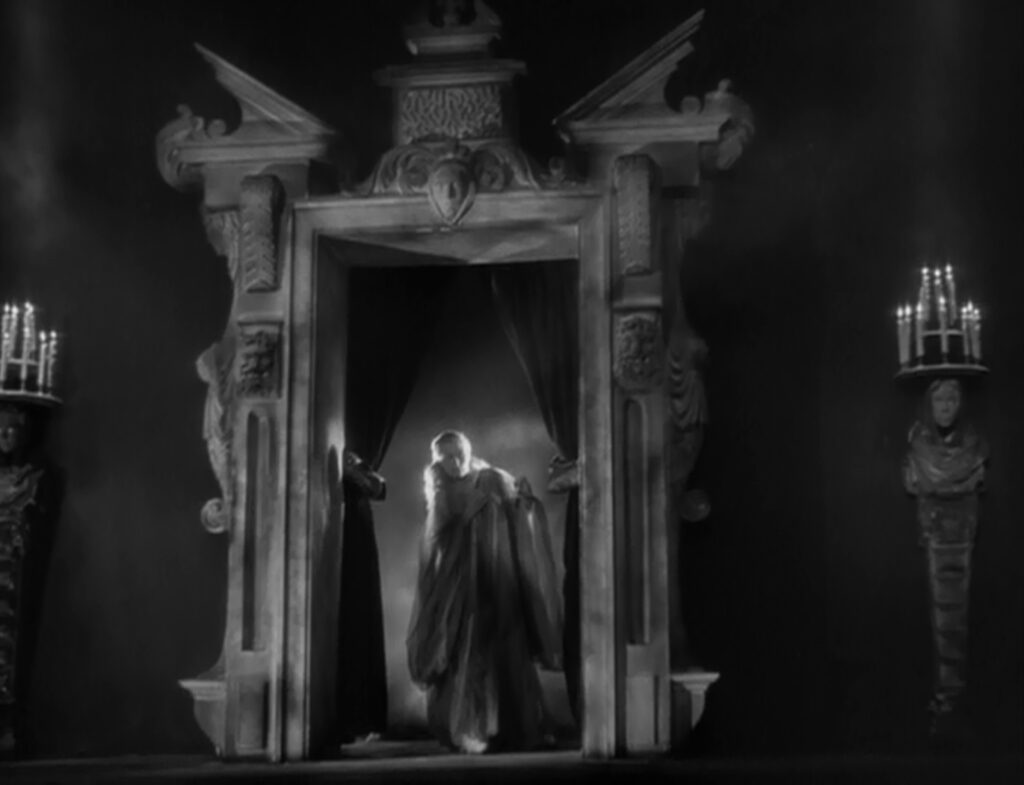
On this level Beauty and the Beast continues the tradition of fantastical allegories that sustained French film through the time of occupation. Under the strict censorship of the Nazi regime, filmmakers took advantage of France’s long tradition of surrealism and fantasy (which went back to Méliès) to encode messages that supported the Resistance, held the country together, or gave hope to the French people. Cocteau did not direct any films during that period, but he gave his script to one of the better known allegories, L’eternel retour, starring Jean Marais who plays both Avenant and the Beast. Even after censorship was lifted, many filmmakers continued using allegory to speak to France’s present moment. The multiple layers of an allegory cushion a message and keep it from sounding preachy. Without the Beast, without the horrors of his castle and all those magical transformations, it would have been difficult to persuade audiences to lighten their fears of each other and of the nation’s future. The hardness of people’s attitudes can be as restrictive as censorship, so that allegory remains useful even when speech is free.
Beauty and the Beast may have spoken with particular relevance to postwar France, but its socio-political allegory is only one of its meanings. Cocteau’s interest in art was apparently stronger than his interest in politics, and this fairy tale says as much about the arts as it does about France’s situation in 1946. If time and familiarity can make an ugly person handsome, a spooky castle enchanting, or a dire situation bearable, surely the same should be true of avant-garde works that do not fit popular tastes.
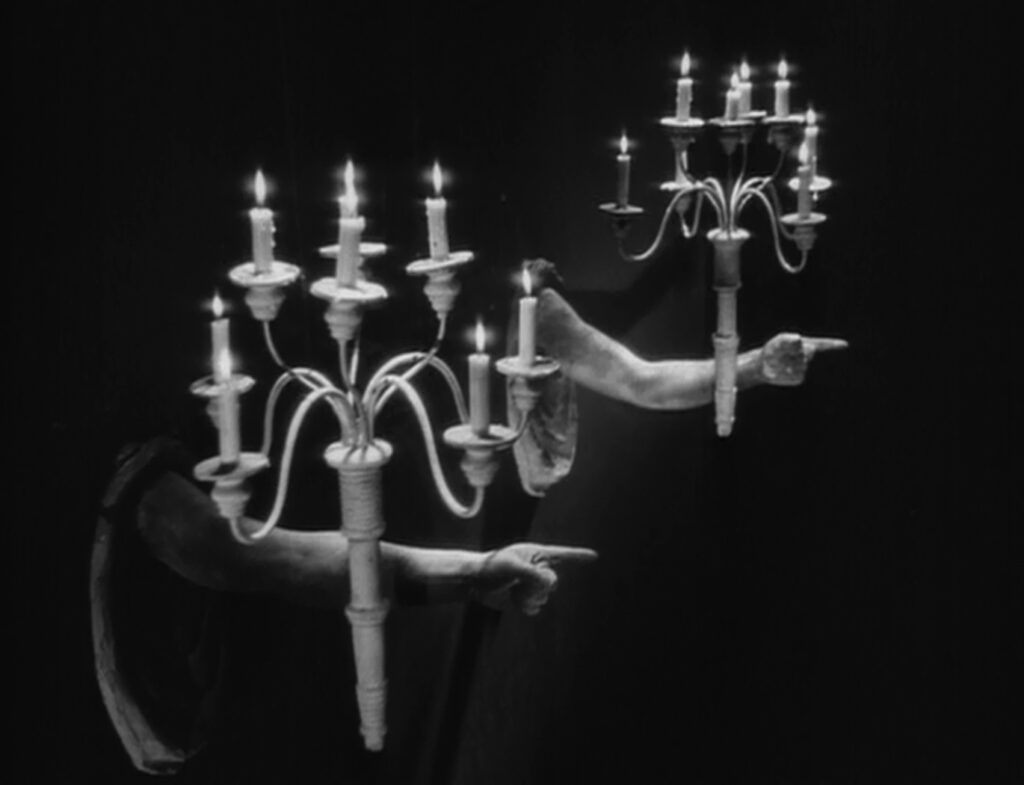
More importantly, there’s a useful lesson about art in the Beast’s five magical charms. Just as they point to five key elements of a complete body, they also point to five essential elements of an artwork. Like the mirror, a work of art must speak directly to its audience, who must be able to see its place inside the work. Like the key, the artwork must open doors to new ways of seeing. Like the horse, it must transport the audience a long distance, from the familiar to the unfamiliar. Like the gloved hand, it must have mastery of its craft. And most of all, like the rose, it must have the beauty and humanity to reach into people’s hearts.
CONNECTIONS:
The Wizard of Oz – Parallels between a mundane home life in the countryside and a land of fantasy
Les enfants terribles – Story governed by transformations; living statues
The Hypothesis of the Stolen Painting – Candelabras held by disembodied arms in a wall